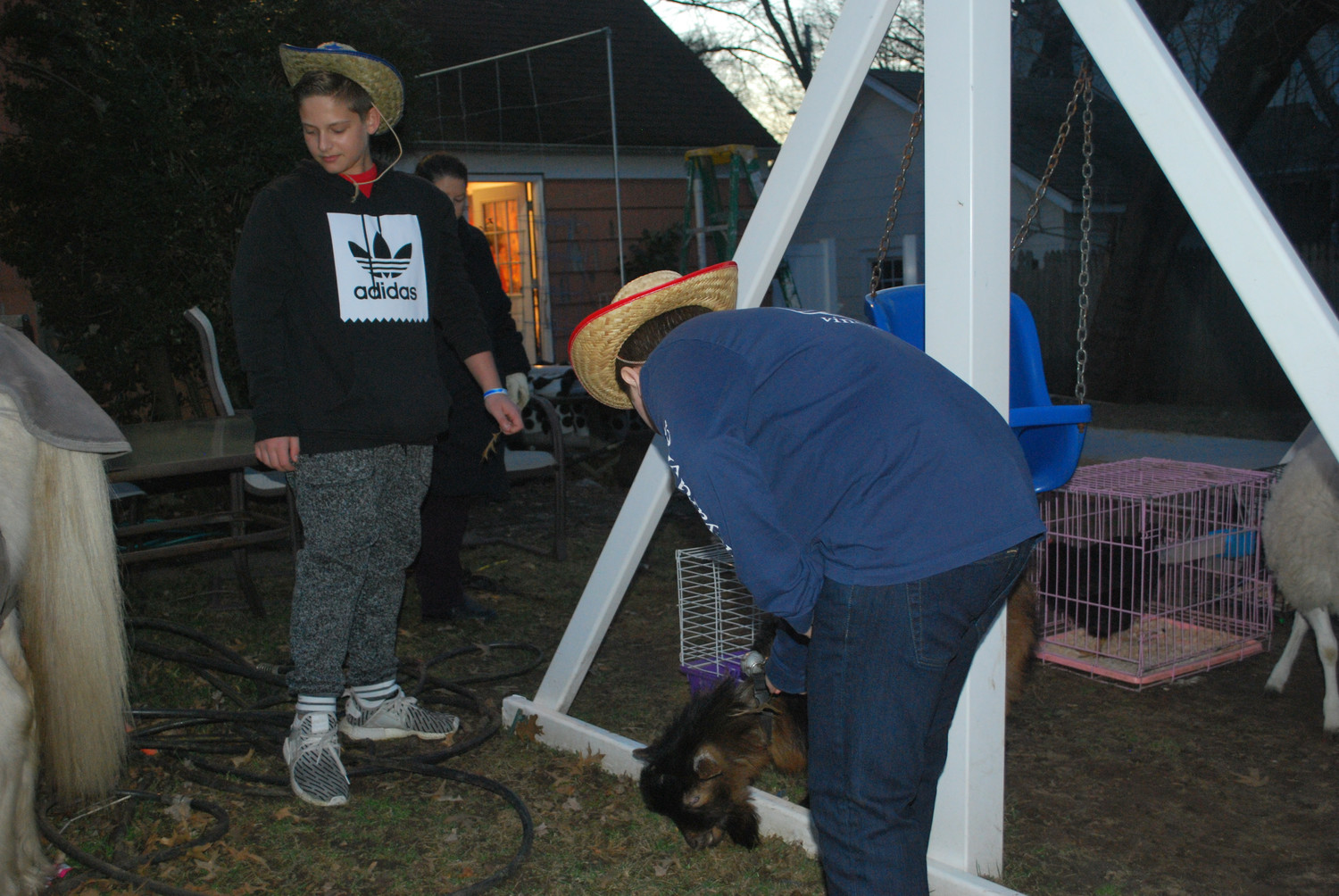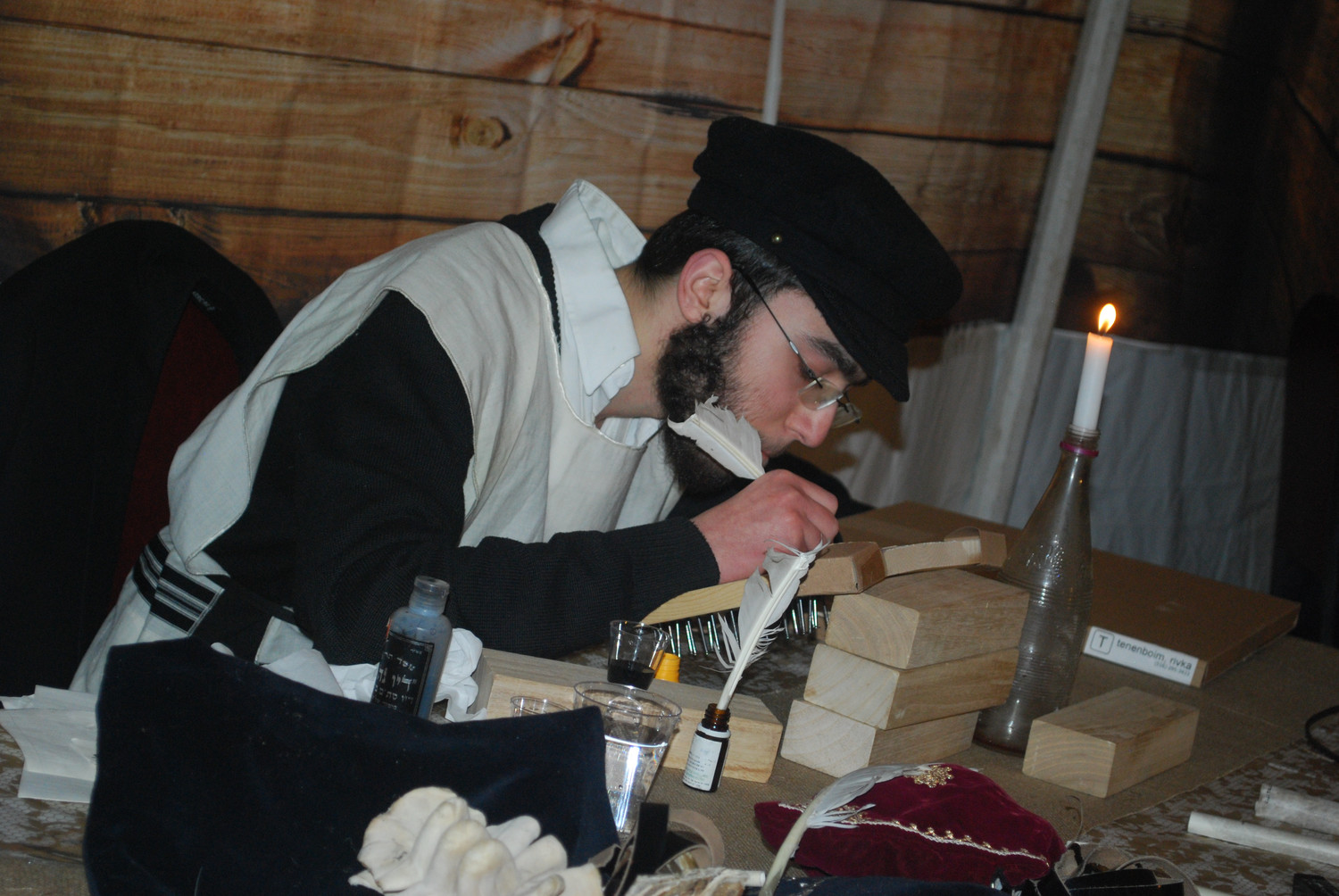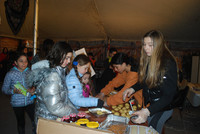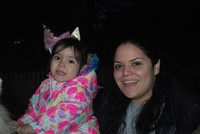Recounting the whole Megillah
Chabad of Hewlett celebrates Purim
There were two readings of the Megillah, dancing, pony rides, making hamantashen, a petting zoo, a village seamstress and a scribe and plenty of food and drink as the Chabad of Hewlett celebrated the Jewish holiday of Purim on Feb. 28.
The holiday that heled create the phrase ‘’the whole megillah” commemorates the story of how the beautiful Queen Esther and her uncle, Mordechai, aid their people in defeating the wicked Hamen, who under King Ahasuerus had a royal decree issued to annihilate the entire Jewish nation. Mordechai and Queen Esther foiled the plot, and Haman and his sons were hanged in ancient Persia in 372 B.C.
Chabad Rabbi Nochem Tenenboim and Rebbetzin Rivkie Tenenboim, along with Miriam and Alex Bronfman and their family set up a shtetl — what a small Jewish town or village in Central or Eastern Europe was called — in the outdoors tent. Last year, the Hewlett Chabad’s theme was Purim Italian style.
“On Purim we celebrate the survival of the Jewish people and the divine presence of God even though we sometimes don’t feel it,” the rabbi said, underscoring the importance of the holiday.
More than a few people possibly felt a divine presence through the two complete Megillah readings, which is also known as the Book of Esther. The 10 chapters were read in Hebrew by visiting Rabbi Shimon Frankel, and all eight times that the villainous Hamen was mentioned, the audience — the women on one side, men on another — stomped their feet in unison or created another noise, as is the tradition, to drown out his name.
Walking through the shtetl with her mother, Logan Sheflin, 9, of Hewlett, explained why Purim is celebrated. “Because Hamen tried to hurt the Jewish people and he was stopped,” she said over the din of klezmer music (Jewish folk music) and “villagers” streaming in and out of the tent. And what do we do when we hear Haman’s name? “Make noise!” she said emphatically.
Purim, this year on March 1, is not only a celebration and a party where adults and children dress in costumes, typically the characters of the story or for many children the popular characters of the day, there were Harry Potters, Wonder Womans and even a dinosaur mixing with the shtetl residents, but there are four mitzvahs (good deeds) connected with the holiday.
“To listen to the Megillah on Purim eve and Purim day; to have a Purim feast; to give a food gift to a friend; and to give charity to the poor,” Tenenboim said.
He and Rivkie were dressed as Tevye and his wife, Golde, the father and mother in the classic story “Fiddler on the Roof”’ that begins in a Russian shtetl and unfolds through the early 20th century. Many Hewlett High School students manned the booths, including making the hamantashen, a filled-pocket cookie or pastry in a triangle shape, that symbolizes the three-cornered hat worn by Haman.
“For Mordechai the Jew was second to King Ahasuerus, a leader to the Jews, and loved by his many brethren. He sought the welfare of his people and spoke peace for all their descendants,” so ends the whole Megillah.

 47.0°,
Mostly Cloudy
47.0°,
Mostly Cloudy 











